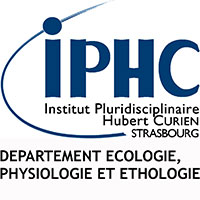Corticosterone mediates telomere length in raptor chicks exposed to chemical mixture
Résumé
Stressors experience early in life by animals may have carry over impacts on life-traits over the life cycle.Accelerated telomere attrition induced by stress during development and growth could play a role insuch delayed effects. Among stressors, exposure to chemicals may modify telomere dynamic but, to date,the trends evidenced between exposure and telomere shortening remains inconsistent. Moreover, therole of corticosterone as a possible mediator of chemical impact on telomere is not yet clearly established.Here, we investigated in wild populations of Red kite whether nestling exposure to metals and pesticideswas related to corticosterone concentrations in feathers and telomere length measured in 47 individuals.Lead and mercury concentrations in blood ranged from 2.3 to 59.0 mg L1 and to 1.4 to 115.7 mg L1,respectively, and were below the toxicity thresholds proposed for wildlife. Rodenticides were detectedin 30% of the chicks. Corticosterone increased with mercury and lead in interaction, showing a synergisticeffect of these 2 non-essential metals on this stress hormone. Telomere length was not linked to metalsand/or rodenticide exposure while it was related negatively to corticosterone. The relationship betweentelomere and corticosterone was modulated by nestling’s age, which suggests that the rate of telomereshortening is higher when corticosterone increases. Our findings propose an effect of low exposure ofRed Kite nestlings to mercury and lead mixture to raise baseline corticosterone in feathers. The relationshipsestablished suggest the hypothesis that telomere attrition could be an indirect consequence ofmetal exposure mediated by corticosterone.
Domaines
Sciences de l'environnement| Origine | Fichiers produits par l'(les) auteur(s) |
|---|

